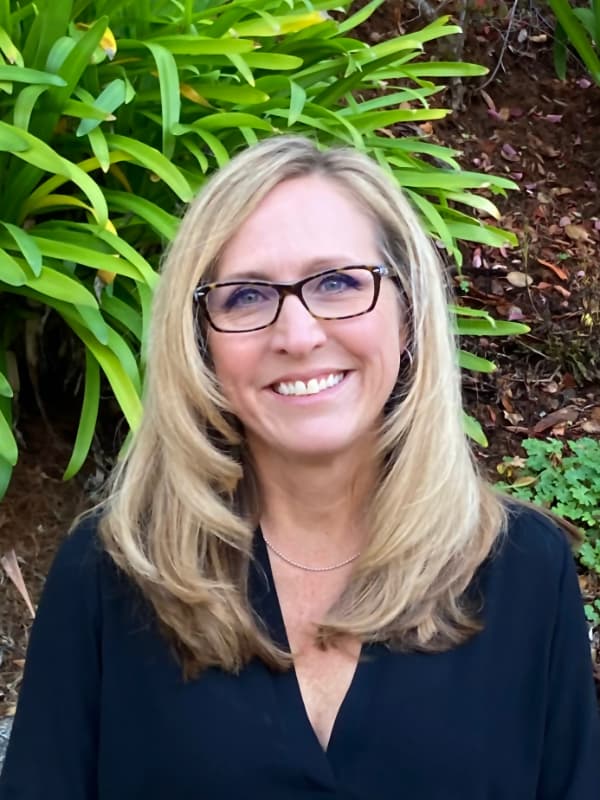Gender-Affirming Care is Whole-Person Care: Integrating Behavioral Health and Independent Pediatrics
Transgender and gender-diverse (TGD) youth are increasingly reaching out to pediatric providers for support, yet some providers feel less than prepared to meet their needs. Licensed therapist Theresa Hall speaks to the unique experience of TGD youth in the healthcare system, and how pediatricians can best support them.
Before reading this piece, it could be helpful to gain familiarity with certain terms related to gender identity and gender-affirming care that will be frequently used. If you’d like to read more, please reference the AAP’s table of definitions.
A Growing Need to Expand Gender-Affirming Care
Transgender and gender-diverse (TGD) youth are increasingly reaching out to pediatric providers for support—be it medical care, education, or referrals to specialists. Yet some providers feel less than prepared or lack the education and training to meet the needs of TGD youth and their families.
According to the Association of American Medical Colleges (AAMC) Curriculum Inventory data collected from 131 U.S. medical schools in 2018, more than 65% of schools now offer some level of transgender-related education. However, pediatricians who have been practicing for many years may have received little to no education about gender identity or gender-affirming care. As decades of stigma towards the LGBTQ+ community slowly shift toward understanding and inclusivity, TGD youth are more likely to look to their pediatricians than ever before.
What kind of unique challenges are TGD youth facing in terms of healthcare and mental healthcare? How can providers best be of service to these patients? Theresa Hall, a Licensed Marriage and Family Therapist and Board Certified Art Therapist (LMFT, ATR-BC), offers illuminating context and insights into these questions. Hall has been supporting TGD people throughout her career, beginning with her work at University of California San Francisco (UCSF) as a Mental Health Therapist and Children’s Service Coordinator. She now directs the Behavior Health Program at Tamalpais Pediatrics, an independent pediatric practice in Marin County, CA. Hall was brought onto the Tamalpais Pediatrics team as a behavioral health expert to support any and all patients, but her gender-affirming care has been a valuable addition to her work there. Blending experience in hospitals, schools, private practice, and now at Tamalpais Pediatrics, Hall speaks to the lattice of interweaving care that can best support TGD youth and families. As she describes, collaboration between mental health providers, pediatricians, and families is critical in helping gender-diverse youth to thrive.
“For young teenagers, that pediatric appointment can be the first place where they share about their gender expression or questioning.”Theresa Hall
“There’s such a natural connection between mental health and medical care when we are talking transgender health.”Theresa Hall
From Hospital to Schools
Theresa Hall leads with a vibrant, warm, and relaxed demeanor; you can imagine the comfort families feel in her office. As a therapist, Hall has gained significant expertise in gender-affirming care over the course of her career. Trying to define gender-affirming care succinctly is challenging, as it encompasses so much more than medical procedure or intervention. Hall references the office WHO definition: “They define gender-affirming care as the social, psychological, behavioral, and medical care of gender-diverse people, which I love,” Hall says. “To me, this care encompasses the emotional, interpersonal, and biological—the whole human. People get stuck on this medical idea of surgery or hormonal interventions. But it is so much more from simply exploring what your child meant when they said ‘I don’t always feel like a girl.’ It’s an opportunity to support them in their transition.” She continues, “Gender-affirming care starts with supportive conversation, exploration, and curiosity.”
While she didn’t go into therapy with the explicit intent of working with TGD people, Hall’s early work at UCSF allowed her to gain experience and understanding working with this community. “At UCSF I saw a lot of patients who were trans or in the process of transitioning,” Hall explains. “At that time, back in the early 90s, transgender care and gender-affirming care was far less available than it is now,” she says. “Anyone who could create a supportive, empathetic environment for trans patients was really needed.”
After over a decade at UCSF, Hall transitioned to working in the school system in K-12 schools, both private and public. “As a school therapist, supporting young people as they were exploring their gender was a big part of what I did, including developing and teaching classes starting as young as kindergarten,” she says. “These classes help younger kids build empathy and understanding about gender in simple terms. They then have consciousness around it as they advance to more complex curriculum in middle and high school.” Hall’s curriculum accounted for the varying needs of children at their different developmental stages, beginning with inquiry activities for children as young as five—simple questions, discussions, and space to ask “why?” and “what does gender really mean?”
“In kindergarten classes we would read books or do activities to just start building awareness of diversity in gender at a young age, to open our minds,” Hall explains. “Story time was a great way to do this. We read Introducing Teddy, for example, which is a fabulous children’s book that introduces the concept of gender identity.”
“As grade levels progressed, we offered classes exploring gender as a spectrum. Our goal was to let kids know: ‘You can be you, whomever you are, and however you want to present yourself.’” Hall continues, “There are always children in a class that didn’t fit in the cisgender categories of this binary society we live in, and seeing them feel safe to share themselves was very rewarding.” Hall’s experience in classrooms gave her insights into Gen-Zers and their experience of gender, which differs in key ways from even one generation before. “The generation of kids coming up today, once we go through curriculum on the gender spectrum, they just get it.” She adds with a laugh, “It’s really more the adults that need help here.”
From Schools to Independent Pediatrics
Hall’s work in schools was foundational for her when she moved into her role as Director of Behavioral Health at Tamalpais Pediatrics. “For me, working in schools and at UCSF translated perfectly into working in a pediatric environment,” she says. “There’s such a natural connection between mental health and medical care when we are talking transgender health. Even if the young person isn’t interested in any gender-affirming medical interventions, the pediatrician’s office can be a place where they feel safe to share, because at a certain age their parents are not in the room.”
Hall continues, “For young teenagers, that pediatric appointment can be the first place where they share about their gender expression or questioning.” For this reason among others, it’s incredibly helpful for Hall to work in collaboration with pediatricians. Tamalpais Pediatrics operates with Hall onsite at their practice; therefore, providers can easily refer patients and their families to mental health services as needed. She can also offer counsel to pediatricians who may be working with trans or questioning patients. This holistic approach to care makes their practice unique in the landscape of traditional medical care, and softens the point of entry into therapy for families.
“Seeing me in a doctor’s office can help families have a smoother introduction to mental health care,” Hall says. “They can say, ‘Oh, we’re just going to the doctor’s office,’ not, ‘We’re going to therapy.’ Or they see their trusted pediatrician working with me, and they feel like therapy is a safe choice.”
Hall’s work at Tamalpais Pediatrics is multilevel and includes direct care and therapy, parent education, collaboration with doctors, and simply providing resources and information. She shares an anecdote about a patient showing signs of mental health struggles, who was referred to her by a pediatrician. “After some time in therapy the patient eventually came out to me as trans,” Hall says. “Then I was able to refer them back to the doctor for adjusted medical care, and the [pediatrician] could then refer to a specialist at a gender clinic. This way the patient’s physical and mental health could be managed holistically, with each type of care enhancing the other. That’s an ideal situation for how things transpire when therapists and doctors share a physical space.” She also highlights the importance of having great referrals in your area. “If that patient is curious about a surgery or hormonal treatment or further support, having trusted referrals goes a long way,” she says.
“During the pandemic it became especially clear that there is a need for behavioral health services in pediatric offices, so this is a movement that is growing in pediatrics—collaborating directly with mental health providers.”Theresa Hall
The Family Experience
Part of Hall’s role is also supporting the mental health and process of parents or caregivers with TGD children. Even if they’re celebrating and accepting their child’s identity shift, families can also experience grief or a sense of loss when their child shares their gender diversity. Rather than suppressing these emotions, Hall recommends families find an informed practitioner or support group where they can work through their feelings. “It’s understandable that families might feel loss, confusion, or grief, as they’ve always known their child in one way,” Hall explains. “And it’s important that they show unconditional love and support to their kids, and frame their gender-diversity in a positive way. This is where therapy can come in for parents.” LGBT MAP and Gender Spectrum offer an abundance of resources for families seeking education and support.
“I’ve had a situation where I met with a mom whose child had come out to her as trans, and she just needed education and processing time. That way she could ask her questions in a neutral and nonjudgmental space, and also take some of the pressure off her child,” Hall explains. “Caring for families is such an important part of this equation.” While your average family heading to the pediatrician may not have access to a therapist onsite, Hall posits that the paradigm of segmented, specialized care is shifting. “During the pandemic it became especially clear that there is a need for behavioral health services in pediatric offices,” she says, “so this is a movement that is growing in pediatrics—collaborating directly with mental health providers.”
Mental Health Challenges for TGD Patients
Mental health challenges can be a foremost concern for TGD youth and their families. According to a 2019 report from the Centers for Disease Control and Prevention (CDC), “Almost 2% of high school students identify as transgender, and of those 27% felt unsafe at school, 35% had been bullied at school, and 35% had attempted suicide in the past year.” These are staggering statistics, particularly when compared to their cisgender peers. Hall also shares that her TGD clients experience bullying and social struggle, anecdotally, at higher rates than her cisgender patients.
With such alarming mental health disparities, how can TGD youth get the support they need? “Of course, a significant challenge is finding providers who are trained in the field and have education about gender-affirming care,” Hall says. Since many areas of the U.S. lack informed providers, TGD people can face discrimination, misconceptions, and stigma when they do seek care. Until the 1970s, homosexuality was classified as a psychiatric disorder by the American Psychiatric Association (APA). Public and medical understanding of gender identity has lagged behind that of sexual orientation, and misconceptions about transgender patients prevail to this day, including assumptions of mental illness and disorder.
With the aim to correct these harmful misconceptions, the APA issued a statement in 2012 asserting: “Being transgender or gender variant implies no impairment in judgment, stability, reliability, or general social or vocational capabilities; however, these individuals often experience discrimination due to a lack of civil rights protections for their gender identity or expression.… [Such] discrimination and lack of equal civil rights is damaging to the mental health of transgender and gender variant individuals.” Hall agrees that discrimination is what leads to the mental health challenges faced by TGD people. “Because of things like bullying and harassment, and because people are often experiencing gender dysphoria or body dysphoria, emotional distress happens, all of which can trigger anxiety and depression,” Hall explains. “Those are natural and understandable responses to what’s going on in their lives.”
As pediatrician’s check in with patients for signs of mental health distress, Hall also suggests keeping track of the developmental milestones that their patients are experiencing. “Puberty, for example, is an important moment to keep an eye on,” Hall explains. “A lot of hormonal changes are happening and body dysphoria can develop or worsen during this time.” Pediatricians’ understanding of these pivotal developmental moments is yet another strength that positions them to provide gender-affirming care.
Lack of Research, Barriers to Care
With the increased visibility for LGBTQ+ rights movement in the U.S. over the last decade, why is there still a deficit of trained and informed providers in the U.S. for gender-diverse patients? The AAP suggests that lack of funding for research on the TGD population has created barriers to comprehensive education for providers. The AAP’s 2018 policy statement on ensuring care for gender-diverse people explains that, “In population-based surveys, questions related to gender identity are rarely asked, which makes it difficult to assess the size and characteristics of the population that is TGD.” Thus, lack of sufficient data relating to TGD youth contributes to insufficient funding and information about this population, leading to less-than-informed providers.
What we do know is that, on the basis of existing data, it has been estimated that 0.7% of youth ages 13 to 17 years (∼150,000) identify as transgender. To put that figure in perspective, population-based survey data from ten state and nine urban school districts found that an average of 1.8% of high school students identify as transgender, according to the CDC. However, this number is likely an underestimate, given the cultural stigma surrounding gender-diverse identities, as well as the difficulty in defining “transgender” in a way that is inclusive to gender-diverse people. With such limited information on who or how many patients providers might be serving, Hall suggests that pediatricians take their education into their own hands. “The offerings for professional development are growing in this field,” Hall says. “The best thing providers can do is seek continuing education on gender-affirming care.”
Creating a Welcoming Office Environment
With the awareness that TGD patients and families can struggle to find gender-affirming care, independent pediatricians can take steps to make their practices more welcoming and supportive. Hall provides some suggestions, including the importance of creating a visually welcoming office environment. “The physical office space is the first thing your patients will see,” she says. “Have visuals up on the walls that demonstrate your practice’s solidarity with and openness to trans and gender-diverse people,” she says. “This could be the trans flag, or a pride flag. Have an inclusivity statement on your website, and include resources on your website that link to trusted and evidence-based sources.”
No matter how a practice chooses to display its values, Hall advises pediatricians to “create an environment that demonstrates your practice understands gender as a spectrum.” She continues, “Practices can do this with simple things—having certain children’s books on the table, giving patients the option of sharing their pronouns on your intake forms, putting up fliers with mental health care options or referrals.” Most importantly, Hall advises providers to ask questions, lead with curiosity, and create space for their patients to share about their experience of gender, whatever that may be.
In an explanation of gender-identity in youth, the AAP states, “self-recognition of gender identity develops over time, much the same way as a child’s physical body does.” Pediatricians, who are already attuned to the rapid shifts occurring for young people in their physical bodies, can apply this understanding to their emotional and mental bodies as well. Creating an atmosphere that welcomes change and fluidity is essential to gender-affirming care, but, as Hall suggests, “This is the kind of atmosphere that any young person needs to thrive, regardless of where they are on the gender spectrum.”
Emily Graf is a freelance writer, wilderness educator, and English teacher living in Colorado. She is passionate about telling stories that promote equal access to quality health care. She can be contacted at emgraf11@gmail.com for inquiries.










